In this interview, Tom Coles, Director of Process Excellence at UBC, sits down with Peter Psarologos, Senior EU QPPV at UBC, to discuss the importance of the Qualified Person for Pharmacovigilance (QPPV) role, common challenges companies face, and how UBC helps clients navigate the complexities of global pharmacovigilance.
Q: For companies entering Europe, having a QPPV is a legal requirement. What does this role actually involve, and why is it so critical?
A: The QPPV role was formally introduced in 2012 under European GVP legislation. It’s not just a regulatory box to check – it’s a mandatory, legally defined function central to patient safety.
The QPPV ensures oversight of a product’s safety profile, benefit–risk balance, and all associated pharmacovigilance activities. Put simply: without a QPPV, you cannot legally enter the European market. The role is the cornerstone of ensuring patients are protected and that regulatory expectations are consistently met.
Q: At what stage should companies bring a QPPV on board, and how does the role add value across the product lifecycle?
A: A QPPV should be engaged before submission. Regulatory dossiers require a description of the pharmacovigilance system, and documents like the Risk Management Plan (RMP) and Pharmacovigilance System Master File (PSMF) need QPPV review and approval.
The ideal time is typically toward the end of Phase III clinical trials – when companies begin developing the RMP and assembling their submission package. Early involvement ensures a smoother transition to regulatory approval and post-marketing oversight.
Q: What are the benefits of outsourcing the QPPV function to an experienced global partner like UBC, versus keeping it in-house?
A: Outsourcing provides unmatched breadth of experience, flexibility, and scalability. While in-house roles may offer easier oversight of internal systems, a QPPV at UBC brings knowledge from multiple clients, audits, and inspections across diverse therapeutic areas and geographies.
This cross-company experience helps identify potential pitfalls early, apply best practices, and ensure a resilient pharmacovigilance framework. At UBC, QPPVs are backed by an entire infrastructure of experts – supporting seamless operations, inspection readiness, and global compliance.
Q: UBC has over 30 years of global experience in pharmacovigilance. How does this translate into value for clients?
A: UBC has decades of hands-on inspection and audit experience with regulators across Europe (MHRA in the UK, PEI in Germany, MPA in Sweden, and more) as well as in the US, Japan, and Switzerland.
This global footprint means we understand regulatory nuances across markets and can support clients with cross-continental teams, local expertise, and a quality-driven infrastructure. Our clients benefit from a truly global perspective combined with local market knowledge.
Q: How does the QPPV role integrate with other stakeholders – both internally and externally?
A: The QPPV is not a standalone figure but a hub of communication and oversight. Internally, the QPPV works closely with regulatory affairs, quality, medical affairs, and clinical teams. Externally, the role connects with clients’ own departments as well as health authorities.
Strong communication pathways and structured processes are essential. At UBC, we emphasize robust, transparent, and proactive communication – ensuring alignment across stakeholders while maintaining patient safety as the top priority.
Q: What role does technology play in enabling effective QPPV oversight?
A: Technology is indispensable. Pharmacovigilance systems manage vast volumes of safety data daily, from spontaneous reports to literature monitoring and signal detection.
UBC leverages validated safety databases, advanced signal detection tools, and technology-driven literature review systems. Our approach ensures real-time oversight, audit-ready documentation, and efficient regulatory responses.
Looking ahead, we’re actively exploring AI solutions to further enhance efficiency and compliance, while staying aligned with evolving legislation.
Q: What are the most common pitfalls companies face when establishing QPPV oversight, and how does UBC help avoid them?
A: The biggest issues include:
- Late engagement of the QPPV – often too close to submission deadlines.
- Misunderstanding EU GVP legislation, particularly among companies entering Europe from outside markets.
- Poor communication and coordination across stakeholders.
UBC addresses these challenges by engaging early, applying project management discipline, conducting audits and mock inspections, and ensuring systems are inspection-ready at all times.
The UBC guiding principle: patient safety first, compliance always.
Closing Thoughts
As Peter noted, appointing a QPPV is far more than a regulatory requirement – it’s a commitment to patient safety and compliance excellence.
With UBC’s decades of experience, global inspection track record, and technology-enabled systems, we partner with companies to navigate the complexities of pharmacovigilance with confidence.
Listen to the interview below:
About UBC
United BioSource LLC (UBC) is the leading provider of evidence development solutions with expertise in uniting evidence and access. UBC helps biopharma mitigate risk, address product hurdles, and demonstrate safety, efficacy, and value under real-world conditions. UBC leads the market in providing integrated, comprehensive clinical, safety, and commercialization services and is uniquely positioned to seamlessly integrate best-in-class services throughout the lifecycle of a product.







